BLOG - Page 16
Recently created mixtures:

Sea-Buckthorn Macerated oil
February 7, 2019

Home made air freshener
June 29, 2016

Homemade Dog-rose distillate
June 28, 2016

Homemade jasmine distillate
June 22, 2016

Moxibustion treatment with Moxa stick
May 30, 2016

Face and body gentle oil cleanser
May 26, 2016
BLOG / LATEST ADDITIONS!
Vitamin C (Magnesium Ascorbyl Phosphate) ☸ Ingredients ☸ Medicine / Health
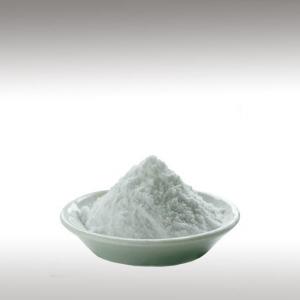

Side effects: There are no adverse side effects to using Magnesium Ascorbyl Phosphate (MAP), although those with sensitive skin may need to be aware of Vitamin C acidic and exfoliating effects. However, Magnesium Ascorbyl Phosphate (MAP) is generally considered more gentle than traditional Vitamin C and therefore safer on sensitive skin.
Vitamin C regulates the synthesis of collagen and it does this by hydroxylating collagen which makes it more stable and improves the way it supports the epidermis.
Magnesium Ascorbyl Phosphate not only reduces melanin production but it also reduces oxidation of the melanin that is produced. It’s also thought to reverse the conversion of Dopa to o-Dopa quinone (which is a skin pigment).
Skin levels of Vitamin C drop 425% by the time a person reaches middle age. Vitamin C enables every step of collagen production from stem cell activity to the structural integrity of the skin matrix. The only way to increase skin levels is to apply Vitamin C topically.
Vitamin C regulates the synthesis of collagen and it does this by hydroxylating collagen which makes it more stable and improves the way it supports the epidermis.
Magnesium Ascorbyl Phosphate not only reduces melanin production but it also reduces oxidation of the melanin that is produced. It’s also thought to reverse the conversion of Dopa to o-Dopa quinone (which is a skin pigment).
Skin levels of Vitamin C drop 425% by the time a person reaches middle age. Vitamin C enables every step of collagen production from stem cell activity to the structural integrity of the skin matrix. The only way to increase skin levels is to apply Vitamin C topically.
Submitted by OperaDreamhouse (August 10, 2016)
Vitamin C (Magnesium Ascorbyl Phosphate) ☸ Ingredients ☸ Beauty / Cosmetics

 Vitamin C is naturally found in skin (mostly in the epidermis, some in the dermis) and it's role in skin biology is well documented.
Vitamin C is naturally found in skin (mostly in the epidermis, some in the dermis) and it's role in skin biology is well documented.Vitamin C is a chemical called ascorbic acid that is naturally occurring in skin. It is known to play a role in collagen production. In addition, when topically applied it is thought to help heal acne, increase the barrier function of skin to decrease moisture loss, protect from UV radiation, and prevent age spots.
Although Vitamin C is not a sunscreen but it protects skin from the free radicals that are caused by UV exposure. It's been shown to reduce lipid peroxidation, limit the release of pro-inflammatory cytokines, protect against apoptosis (or cell death) and to reduce redox-sensitive cell signaling.
Submitted by OperaDreamhouse (August 10, 2016)
Ethyl Alcohol (CH3 CH2 OH) ☸ Ingredients ☸ Base / General
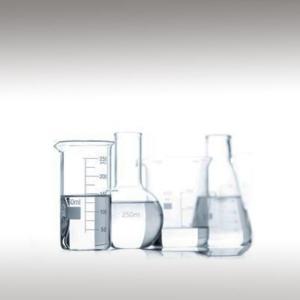

Ethanol also commonly called Alcohol, Ethyl Alcohol, and drinking Alcohol, is the principal type of alcohol found in alcoholic beverages, produced by the fermentation of sugars by yeasts.
Ethanol is a volatile, flammable, colorless liquid with a slight chemical odor. It is used as an antiseptic, a solvent, a fuel, and due to its low freezing point, the active fluid in many alcohol thermometers. The molecule is a simple one, being an ethyl grouplinked to a hydroxyl group. Its structural formula, CH3CH2 OH, is often abbreviated as C2H5 OH or EtOH.
The origin word Alcohol is not exactly known, but it is believed that it is from Arab origin. The most common interpretation of the Arabic "Al-kohl" - antimony, antimony powder. Although the link between Alcohol and Antimony, in principle, there is no chemicalbond, but may be an explanation of the following: finely crushed antimony, the powder was used for very expensive cosmetic pencils in the middle ages of Arabia, and the term (Al-kohl) began to take root as exotic, magical qualities of the element synonymous. These unusual properties have been attributed to Ethanol too, so it is also given the name "Al-kohl", which gradually became alcohol.
Ethanol is a volatile, flammable, colorless liquid with a slight chemical odor. It is used as an antiseptic, a solvent, a fuel, and due to its low freezing point, the active fluid in many alcohol thermometers. The molecule is a simple one, being an ethyl grouplinked to a hydroxyl group. Its structural formula, CH3CH2 OH, is often abbreviated as C2H5 OH or EtOH.
The origin word Alcohol is not exactly known, but it is believed that it is from Arab origin. The most common interpretation of the Arabic "Al-kohl" - antimony, antimony powder. Although the link between Alcohol and Antimony, in principle, there is no chemicalbond, but may be an explanation of the following: finely crushed antimony, the powder was used for very expensive cosmetic pencils in the middle ages of Arabia, and the term (Al-kohl) began to take root as exotic, magical qualities of the element synonymous. These unusual properties have been attributed to Ethanol too, so it is also given the name "Al-kohl", which gradually became alcohol.
The stem word "Eth-" used in many related compounds originates with the German word for Ethanol (äthyl). The prefix Ethyl was coined in 1834 by the German chemist Justus Liebig. Ethyl is a contraction of the Ancient Greek (aithḗr, “Upper Air”) and the Greek word (Hyle, substance).
The name Ethanol was coined as a result of a resolution that was adopted at the International Conference on Chemical Nomenclature that was held in April 1892 in Geneva, Switzerland.
Ethanol is a byproduct of the metabolic process of yeast. As such, Ethanol will be present in any yeast habitat. Ethanol can commonly be found in overripe fruit. Ethanol produced by symbiotic yeast can be found in Bertam Palm blossoms. It is also produced during the germination of many plants as a result of natural anerobiosis.
Ethanol has been detected in outer space, forming an icy coating around dust grains in interstellar clouds.
You will not find pure alcohol in most drinks. Drinking pure alcohol can be deadly because it only takes a few ounces of pure alcohol to quickly raise the blood alcohol level into the danger zone:
Distilled spirits (rum, gin, vodka, whiskey) - 40 to 95%. Most of the typical spirits purchased in liquor stores are 40% Alcohol. Some highly concentrated forms of rum and whisky (75 to 90%) can be purchased in liquor stores.
Submitted by OperaDreamhouse (June 29, 2016)
Sweet Mock-Orange Blossom (Philadelphus Coronarius) ☸ Plants ☸ Base / General
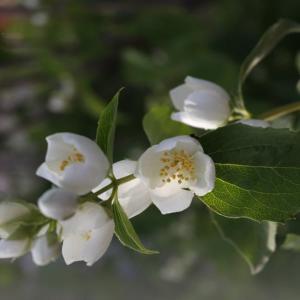

It is a popular ornamental plant for gardens in temperate regions, valued for its profuse sweetly scented white blossom in early summer.
Philadelphus coronarius is a species of flowering plant in the family Hydrangaceae, native to Southern Europe. It is a deciduous shrub growing to 3 m tall by 2,5 m wide, with toothed leaves and bowl-shaped white flowers with prominent stamens. A woody plant smaller than a tree, and usually with several stems from the same root. In the species the blooms are abundant and very fragrant. First grown in Europe in the 1500s.
Sweet Mock Orange produces strongly scented white flowers in clusters of 5 - 7 in late June - early July. The flowers are hermaphrodite (have both male and female organs) and are pollinated by bees. Suitable for: light (sandy), medium (loamy) and heavy (clay) soils and can grow in heavy clay and nutritionally poor soils.
As the "Mock" in its name suggests, Mock Orange is not a True Orange. But the citrusy smell of its blossoms was enough to invite comparison, thus accounting for the origin of the shrub's common name.
Philadelphus coronarius is a species of flowering plant in the family Hydrangaceae, native to Southern Europe. It is a deciduous shrub growing to 3 m tall by 2,5 m wide, with toothed leaves and bowl-shaped white flowers with prominent stamens. A woody plant smaller than a tree, and usually with several stems from the same root. In the species the blooms are abundant and very fragrant. First grown in Europe in the 1500s.
Sweet Mock Orange produces strongly scented white flowers in clusters of 5 - 7 in late June - early July. The flowers are hermaphrodite (have both male and female organs) and are pollinated by bees. Suitable for: light (sandy), medium (loamy) and heavy (clay) soils and can grow in heavy clay and nutritionally poor soils.
As the "Mock" in its name suggests, Mock Orange is not a True Orange. But the citrusy smell of its blossoms was enough to invite comparison, thus accounting for the origin of the shrub's common name.
Submitted by OperaDreamhouse (June 14, 2016)
Sweet Mock-Orange Blossom (Philadelphus Coronarius) ☸ Plants ☸ Beauty / Cosmetics


The leaves are rich in saponins , when crushed and mixed with water they produce a lather that is an effective cleaner, used on the body, clothes. You can wash your hands by merely picking a couple of leaves or a bunch of blossom, wetting your hands and then rubbing the plant material vigorously as if it was a bar of soap. This soap is a very gentle cleaner that does not remove the body's natural oils, but does remove dirt. It is not very effective against oil.
Submitted by OperaDreamhouse (June 14, 2016)
Rhododendron Essential Oil (Rhododendron Anthopogon D. Don) ☸ Essential oils ☸ Base / General
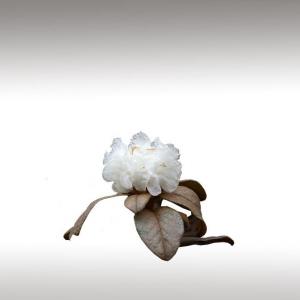

Botanical Name: Rhododendron anthopogon D. Don
Botanical Origin: Nepal
Common Method of Extraction: Steam distilled
Part Typically Used: Flowers and leaves
Color: Pale yellow
Consistency: Thin liquid
Perfumery Note: Middle
Shelf Life: 3-4 years
Strength of Initial Aroma: Fresh, exotic floral, sweet, fruity, slightly balsamic with herbaceous undertone. This essential oil has an exotic floral aroma with lingering sweet fruity notes.
Blends Well With: Black spruce, clary sage, davana,fir needle siberian, geranium egypt, ginger fresh, lavender, orange sweet, palmarosa essential oils.
Common name : Sunpati oil, Anthopogon oil, Balu ot sunpati.
Chemical structure: The oil was characterized by a high amount of monoterpene hydrocarbons (76.1%), mainly α- pinene (37.4%), followed by β-pinene (16.1%), limonene (13.3%), and the sesquiterpene, δ-cadinene (9.1%). Leaves produce aromatic oil containing a- and b- pinine, d-limonene, 3-cyclohexene, linalyl proponate, butonaic acid, caryophyllene, coapene, caryophyllene , copaene , caryophyllene oxide , guaiol ,o-selinene2- nepathalimine.
Note: Only the Rhododendron Anthopogon species is distilled as it has fragrant leaves and is non toxic. This is one essential oil that is species specific, the species being anthopogon. The rest of the Rhododendron genus is highly toxic and should not be distilled.
There are more than 850 different natural species in the Genus (group) Rhododendron. They are native to the temperate regions of Asia, North America, and Europe, as well as to the tropical regions of southeast Asia and northern Australia.
An evergreen shrub growing at an altitude of 3,000 - 4,000 m a.s.l., harvested in several regions of Nepal. This plant is a national symbol in Nepal and is widely used as incense for its aromatic properties. It is known more for its brilliant blossoming that covers hillsides from Bhutan to central Nepal, few have encountered its fragrant and unique scent.
It is an evergreen, strongly aromatic shrub-let too 60 cm to 1 m tall. Leaves simple, alternate, short stalked, oval to ovate, 2,5 - 4 cm long, densely scaly beneath and aromatic characteristic smell when crushed. Flowers white or yellowish tinged with pink, 4 - 6 in compact terminal clusters. fruits capsules, about 3 mm long, enriched by persistent calyx. It is in leaf all year, in flower form April to May, and the seeds riped from July to August.
Anthopogon oil, as it is usually referred to in Nepal, is obtained by steam distillation of the aerial parts of Rhododendron Anthopogon.
Botanical Origin: Nepal
Common Method of Extraction: Steam distilled
Part Typically Used: Flowers and leaves
Color: Pale yellow
Consistency: Thin liquid
Perfumery Note: Middle
Shelf Life: 3-4 years
Strength of Initial Aroma: Fresh, exotic floral, sweet, fruity, slightly balsamic with herbaceous undertone. This essential oil has an exotic floral aroma with lingering sweet fruity notes.
Blends Well With: Black spruce, clary sage, davana,fir needle siberian, geranium egypt, ginger fresh, lavender, orange sweet, palmarosa essential oils.
Common name : Sunpati oil, Anthopogon oil, Balu ot sunpati.
Chemical structure: The oil was characterized by a high amount of monoterpene hydrocarbons (76.1%), mainly α- pinene (37.4%), followed by β-pinene (16.1%), limonene (13.3%), and the sesquiterpene, δ-cadinene (9.1%). Leaves produce aromatic oil containing a- and b- pinine, d-limonene, 3-cyclohexene, linalyl proponate, butonaic acid, caryophyllene, coapene, caryophyllene , copaene , caryophyllene oxide , guaiol ,o-selinene2- nepathalimine.
Note: Only the Rhododendron Anthopogon species is distilled as it has fragrant leaves and is non toxic. This is one essential oil that is species specific, the species being anthopogon. The rest of the Rhododendron genus is highly toxic and should not be distilled.
There are more than 850 different natural species in the Genus (group) Rhododendron. They are native to the temperate regions of Asia, North America, and Europe, as well as to the tropical regions of southeast Asia and northern Australia.
An evergreen shrub growing at an altitude of 3,000 - 4,000 m a.s.l., harvested in several regions of Nepal. This plant is a national symbol in Nepal and is widely used as incense for its aromatic properties. It is known more for its brilliant blossoming that covers hillsides from Bhutan to central Nepal, few have encountered its fragrant and unique scent.
It is an evergreen, strongly aromatic shrub-let too 60 cm to 1 m tall. Leaves simple, alternate, short stalked, oval to ovate, 2,5 - 4 cm long, densely scaly beneath and aromatic characteristic smell when crushed. Flowers white or yellowish tinged with pink, 4 - 6 in compact terminal clusters. fruits capsules, about 3 mm long, enriched by persistent calyx. It is in leaf all year, in flower form April to May, and the seeds riped from July to August.
Anthopogon oil, as it is usually referred to in Nepal, is obtained by steam distillation of the aerial parts of Rhododendron Anthopogon.
Submitted by OperaDreamhouse (June 9, 2016)
Rhododendron Essential Oil (Rhododendron Anthopogon D. Don) ☸ Essential oils ☸ Medicine / Health


Therapeutic Properties :
Anti-inflammatory
Antibacterial
Decongestant
Nervous system calming
Antispasmodic
Antibacterial
Antibacterial decongestant
Nervous tonic
Analgesic.
Contraindications : None. Considered Non-toxic, non-irritant, non-sensitizing. Do not take Rhododendron essential oil internally.
Pregnancy / Lactation : No database.
Children: No database.
Rhododendron essential oil can be applied topically, as a compress, in the bath, through direct inhalation, or used with a diffuser.
Tibetan medicinehas long used dried Rhododendron in herbal teas to stoke the digestive fire, to treat heat-related headaches as well as sore throats and nausea, and to promote inner unity.
According to Himalayan aromatherapy, this oil stimulates the nervous system and has been used for treating sore muscles and gout rheumatic conditions. In the nervous system, Rhododendron's tonifying properties support relaxation and centering.
A general tonic to the system, Rhododendron oil can be applied topically (synergistically blended with Frankincense and German Chamomile) to help reduce inflammation, or can be applied as a compress over the upper abdomen to support adrenal and liver function.
the oil is able to reduce cancer cell growth independently of the cell line and the treatment protocols used.
Its leaves and fresh flowers are made into a tea by Himalayan healers and drunk to promote digestive heat, stimulate appetite and relieve liver disorders. Its tea is also drunk for sore throat, and to counteract water earth illness, fire headaches, fire back pain, cold, bloode disorders, bone disease, potato allergies, and vomiting.
Anti-inflammatory
Antibacterial
Decongestant
Nervous system calming
Antispasmodic
Antibacterial
Antibacterial decongestant
Nervous tonic
Analgesic.
Contraindications : None. Considered Non-toxic, non-irritant, non-sensitizing. Do not take Rhododendron essential oil internally.
Pregnancy / Lactation : No database.
Children: No database.
Rhododendron essential oil can be applied topically, as a compress, in the bath, through direct inhalation, or used with a diffuser.
Tibetan medicinehas long used dried Rhododendron in herbal teas to stoke the digestive fire, to treat heat-related headaches as well as sore throats and nausea, and to promote inner unity.
According to Himalayan aromatherapy, this oil stimulates the nervous system and has been used for treating sore muscles and gout rheumatic conditions. In the nervous system, Rhododendron's tonifying properties support relaxation and centering.
A general tonic to the system, Rhododendron oil can be applied topically (synergistically blended with Frankincense and German Chamomile) to help reduce inflammation, or can be applied as a compress over the upper abdomen to support adrenal and liver function.
the oil is able to reduce cancer cell growth independently of the cell line and the treatment protocols used.
Its leaves and fresh flowers are made into a tea by Himalayan healers and drunk to promote digestive heat, stimulate appetite and relieve liver disorders. Its tea is also drunk for sore throat, and to counteract water earth illness, fire headaches, fire back pain, cold, bloode disorders, bone disease, potato allergies, and vomiting.
Submitted by OperaDreamhouse (June 9, 2016)
Rhododendron Essential Oil (Rhododendron Anthopogon D. Don) ☸ Essential oils ☸ Spiritual Practises


Most significant, Anthopogon has been collected and gathered by high Himalayan people from Dolpo, Mustang to the Sherpas and Bhutanese as a scared fragrant substance to be burnt in offering to please and harmonize the earthly divine-especially local earth spirit. It is one five common Himalayan incense herbs symbolizing the elements that are offered to sanctify and pacify the environment.
An interesting spiritual fact is that the dried leaves of Rhododendron Anthopogon are crushed by Buddhist monks, mixed with Ghee, and made into sacred incense for their monasteries and others throughout SE Asia.
This is a wonderful calming oil for meditation or chanting to help makespiritual connections by opening the mind and heart to a free flow of positive energy through its grounding, calming, and centering properties.
Emotional grounding and settling, it is known to quiet mental activity, which is a valuable tool in meditation practice: Protection, grounding, cleanse, consecrate, confidence, attract positive energy flow, creativity, scrying, meditation, reiki, chanting, all spiritual working and connections, anointing, opening the 3rd Eye and working with the 4th Heart Chakra.
This essential oil helps to call and allow in all that you want to manifest in life.
An interesting spiritual fact is that the dried leaves of Rhododendron Anthopogon are crushed by Buddhist monks, mixed with Ghee, and made into sacred incense for their monasteries and others throughout SE Asia.
This is a wonderful calming oil for meditation or chanting to help makespiritual connections by opening the mind and heart to a free flow of positive energy through its grounding, calming, and centering properties.
Emotional grounding and settling, it is known to quiet mental activity, which is a valuable tool in meditation practice: Protection, grounding, cleanse, consecrate, confidence, attract positive energy flow, creativity, scrying, meditation, reiki, chanting, all spiritual working and connections, anointing, opening the 3rd Eye and working with the 4th Heart Chakra.
This essential oil helps to call and allow in all that you want to manifest in life.
Submitted by OperaDreamhouse (June 9, 2016)
Rhododendron Essential Oil (Rhododendron Anthopogon D. Don) ☸ Essential oils ☸ Beauty / Cosmetics


This oil is a good natural source of sweet herbal, a faintly balsamic essence Rhododendron Anthopogon essential oil can be used on the skin and hair.
According to Himalayan aromatherapy, Rhododendron has grounding, calming, and centering properties.
According to Himalayan aromatherapy, Rhododendron has grounding, calming, and centering properties.
Submitted by OperaDreamhouse (June 9, 2016)
Ginger Lily Essential Oil (Hedychium Coronarium) ☸ Essential oils ☸ Beauty / Cosmetics


Ginger Lily essential oil is a good skin moisturizer that leaves the skin rejuvenated and smooth. It is suited for all skin types and is especially for dry and dehydrated skin.
This delicate floral oil is said to be an uplifting aphrodisiac that inspires romance and sensuality and a wonderful skin treatment used for everything from acne to deep skin wounds.
The oil is used inperfume formulations. It is also used in hair oil to prevent hair fall and baldness. Due to its warming sensation, the oil is used in massages.
Ginger Lily essential oil fights bad mouth taste and smell.
This delicate floral oil is said to be an uplifting aphrodisiac that inspires romance and sensuality and a wonderful skin treatment used for everything from acne to deep skin wounds.
The oil is used inperfume formulations. It is also used in hair oil to prevent hair fall and baldness. Due to its warming sensation, the oil is used in massages.
Ginger Lily essential oil fights bad mouth taste and smell.
Submitted by OperaDreamhouse (June 3, 2016)
Ginger Lily Essential Oil (Hedychium Coronarium) ☸ Essential oils ☸ Spiritual Practises


Ginger Lily essential oil is known to be a fantastic antidepressant. It lifts the spirits and unleashes pent up anger and frustration.
7th Chakra - higher information, expansive, meditative, source energy, transformative, unconditional love, uplifting.
7th Chakra - higher information, expansive, meditative, source energy, transformative, unconditional love, uplifting.
Submitted by OperaDreamhouse (June 3, 2016)
Lemon Verbena Essential Oil (Aloysia Citriodora) ☸ Essential oils ☸ Base / General
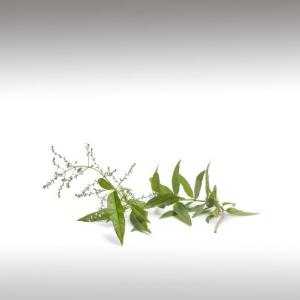

Botanical Name: Aloysia citriodora
Botanical Origin: Western South America
Common Method of Extraction: Steam distillation
Part Typically Used: Freshly harvested leaves
Color: Pale olive or yellow in color
Consistency: Thin
Perfumery Note: Top
Shelf Life: 3 - 4 years
Strength of Initial Aroma: Lemony, sweet fresh, green, citrus, floral, nuance of minty back note
Blends Well With: Neroli, Palmarosa, Olibanum (Frankincense), Bergamot, Elemi, Frankincense Sacra, Geranium Africa, Lavender, Mandarin Petitgrain, Melissa, Myrrh, Orange Wild, Patchouli, Rose Otto, Sandalwood Mysore, Lemon and other Citrus essential oils.
Common name : Lemon Beebrush, Lemonscented Verbena, Herb Louisa.
Chemical strukture: The major isolates in lemon verbena oil are citral (30-35%), nerol and geraniol. The main chemical components of lemon verbena is borneol, geraniol, linalool, nerol, citral, dipentene, limonene, myrcene, verbenone, furocumarines and flavonoids.
Citral: Antibacterial, antihstaminic, fungicide, expectorant, anticancerous.
Linalol: Antibacterial, antiinflammatory, antiespasmodic, hepatoprotective.
Camphene: Antioxidant, expectorant.
Caryophyllene: antiinflammatory, antiasthmatic, antibacterial, antitumor.
Limone: Antibacterial, anticancerous, antiespasmodic, expectorant.
Notes: Lemon Verbena oil must not be mistaken with "Spanish Verbena", also referred to by some as "verbena oil", or with Verbena Officinalis, which refers to the herb Vervain.
Aloysia Citrodora is a species of flowering plant in the verbena family Verbenaceae. Native to South America - more specifically Argentina and Chile. Within a cultivated and semi-wild state it can be found across the Mediterranean region, as well as Kenya and China. Within temperate regions it can easily be picked up at garden centra and nurseries.
It was brought to Europe by the Spanish and the Portuguese in the 17th century and cultivated for its oil. This deciduous shrub was introduced into England in 1784.
Lemon Verbena is a perennial shrub or subshrub growing to 2 - 3 m high. The 8-cm-long, glossy, pointed leaves are slightly rough to the touch and emit a powerful scent reminiscent of Lemon when bruised.
Sprays of tiny purple or white flowers appear in late spring or early summer. It is sensitive to cold, losing leaves at temperatures below 0 °C.
Native from South America, it can found cultivated in many gardens and orchards, because its Lemon - like scented leaves and flowers and because of its medicinal properties.
It is convenient to pick up the leaves before the plant bloom. The leaves and stalks are steam distilled for the oil which is liquid, and a yellowish-green.
It has a fresh lemony smell which is hot and bitter at the same time, so subtle that it has proved difficult to reproduce synthetically.
Botanical Origin: Western South America
Common Method of Extraction: Steam distillation
Part Typically Used: Freshly harvested leaves
Color: Pale olive or yellow in color
Consistency: Thin
Perfumery Note: Top
Shelf Life: 3 - 4 years
Strength of Initial Aroma: Lemony, sweet fresh, green, citrus, floral, nuance of minty back note
Blends Well With: Neroli, Palmarosa, Olibanum (Frankincense), Bergamot, Elemi, Frankincense Sacra, Geranium Africa, Lavender, Mandarin Petitgrain, Melissa, Myrrh, Orange Wild, Patchouli, Rose Otto, Sandalwood Mysore, Lemon and other Citrus essential oils.
Common name : Lemon Beebrush, Lemonscented Verbena, Herb Louisa.
Chemical strukture: The major isolates in lemon verbena oil are citral (30-35%), nerol and geraniol. The main chemical components of lemon verbena is borneol, geraniol, linalool, nerol, citral, dipentene, limonene, myrcene, verbenone, furocumarines and flavonoids.
Citral: Antibacterial, antihstaminic, fungicide, expectorant, anticancerous.
Linalol: Antibacterial, antiinflammatory, antiespasmodic, hepatoprotective.
Camphene: Antioxidant, expectorant.
Caryophyllene: antiinflammatory, antiasthmatic, antibacterial, antitumor.
Limone: Antibacterial, anticancerous, antiespasmodic, expectorant.
Notes: Lemon Verbena oil must not be mistaken with "Spanish Verbena", also referred to by some as "verbena oil", or with Verbena Officinalis, which refers to the herb Vervain.
Aloysia Citrodora is a species of flowering plant in the verbena family Verbenaceae. Native to South America - more specifically Argentina and Chile. Within a cultivated and semi-wild state it can be found across the Mediterranean region, as well as Kenya and China. Within temperate regions it can easily be picked up at garden centra and nurseries.
It was brought to Europe by the Spanish and the Portuguese in the 17th century and cultivated for its oil. This deciduous shrub was introduced into England in 1784.
Lemon Verbena is a perennial shrub or subshrub growing to 2 - 3 m high. The 8-cm-long, glossy, pointed leaves are slightly rough to the touch and emit a powerful scent reminiscent of Lemon when bruised.
Sprays of tiny purple or white flowers appear in late spring or early summer. It is sensitive to cold, losing leaves at temperatures below 0 °C.
Native from South America, it can found cultivated in many gardens and orchards, because its Lemon - like scented leaves and flowers and because of its medicinal properties.
It is convenient to pick up the leaves before the plant bloom. The leaves and stalks are steam distilled for the oil which is liquid, and a yellowish-green.
It has a fresh lemony smell which is hot and bitter at the same time, so subtle that it has proved difficult to reproduce synthetically.
Submitted by OperaDreamhouse (June 2, 2016)
Lemon Verbena Essential Oil (Aloysia Citriodora) ☸ Essential oils ☸ Food / Cooking


Use the leaves in anything that requires a Lemon flavour -
chopped in stuffing’s for fish or chicken, in sausages, in salads, or in
fruit jellies and sweets. Leaves can be used instead of Lemongrass in many South-East Asian recipes.
The Verbena oil and plant play quite a considerable part in the food and drink industry for a flavour of Lemon.
The Verbena oil and plant play quite a considerable part in the food and drink industry for a flavour of Lemon.
Submitted by OperaDreamhouse (June 2, 2016)
Lemon Verbena Essential Oil (Aloysia Citriodora) ☸ Essential oils ☸ Medicine / Health


Therapeutic Properties :
Antiseptic
Antispasmodic
Aphrodisiac
Digestive
Emollient
Febrifuge
Hepatic
Insecticide
Sedative
Stomachic
Tonic.
Contraindications : There is not much safety data regarding Lemon Verbena oil, but since it has a high citral level it may cause sensitization and is phototoxic. The essential oil is a delightful but dangerously phototoxic oil - use with caution on the skin even when diluted, as allessential oils should be, but it is perfectly safe in burners or vapourisers or as a linen water.
Despite this generally positive portrayal of Lemon Verbena, some people do suffer from mild dermatitis as a mild allergic response. Also, if you suffer from kidney disease, Lemon Verbena’s active ingredients could potentially worsen the condition, so avoid use.
Pregnancy / Lactation : .Not recommended for use during both pregnancy and lactation, a due to the constituent citral.
Children: Avoid topical use on children under 7 years.
Lemon Verbena oil has traditionally been used to ease digestion, treat hangovers, clear acne, improve digestion, flush fats from the body, treat cirrhosis of the liver, decrease stress, lift depression, treat impotency and frigidity, decrease inflammation, treat sexually transmitted infections, reduce heart palpitations, and bring the body back into balance.
Lemon Verbena dates back to pre-Biblical times, when the Ancient Celts named the plant after its ability to treat kidney stones.
In traditional South American medicine, Lemon Verbena was trusted as a diaphoretic, meaning that it stimulated sweating, and was therefore used to break fevers and speed healing for those suffering from inflammatory illnesses.
The uses of Lemon Verbena are similar to those of mint, orange flowers, or Melissa, as a stomachic and antispasmodic in dyspepsia, indigestion and flatulence, stimulating skin and stomach.
Moderate antioxidant supplementation with Lemon Verbena extract protects neutrophils against oxidative damage, decreasing the signs of muscular damage in chronic running exercise without blocking the cellular adaptation to exercise.
This oil is a fantastic liver tonic and digestive aid that helps flush fats and toxins from the body. In addition to its sunny, uplifting scent, Lemon Verbena is infused with protective antioxidants said to protect the skin from aging. This luscious elixir is also used to prevent oxidative skin damage.
Packed with antioxidants, Lemon Verbena offers vivacious protection from cell-damage and helps tissue recover after exercise. It stimulates the entire digestive system, helping the body rid itself of toxins, poisons and fats.
Lemon Verbena oil refreshes the body, stimulates brain function and increases concentration.
This oil parallels rose in its complexity. The clear effects of the antiviral and sedative citrals are complemented by one of the most impressive cocktails of high-impact secondary and trace components. Its activity and benefits fir the endocrine system are unsurpassed. Precious and expensive, Lemon Verbena brings equilibrium and communication between all major endocrine glands.” Dr. Kurt Schnaubelt, Medical Aromatherapy.
Antiseptic
Antispasmodic
Aphrodisiac
Digestive
Emollient
Febrifuge
Hepatic
Insecticide
Sedative
Stomachic
Tonic.
Contraindications : There is not much safety data regarding Lemon Verbena oil, but since it has a high citral level it may cause sensitization and is phototoxic. The essential oil is a delightful but dangerously phototoxic oil - use with caution on the skin even when diluted, as allessential oils should be, but it is perfectly safe in burners or vapourisers or as a linen water.
Despite this generally positive portrayal of Lemon Verbena, some people do suffer from mild dermatitis as a mild allergic response. Also, if you suffer from kidney disease, Lemon Verbena’s active ingredients could potentially worsen the condition, so avoid use.
Pregnancy / Lactation : .Not recommended for use during both pregnancy and lactation, a due to the constituent citral.
Children: Avoid topical use on children under 7 years.
Lemon Verbena oil has traditionally been used to ease digestion, treat hangovers, clear acne, improve digestion, flush fats from the body, treat cirrhosis of the liver, decrease stress, lift depression, treat impotency and frigidity, decrease inflammation, treat sexually transmitted infections, reduce heart palpitations, and bring the body back into balance.
Lemon Verbena dates back to pre-Biblical times, when the Ancient Celts named the plant after its ability to treat kidney stones.
In traditional South American medicine, Lemon Verbena was trusted as a diaphoretic, meaning that it stimulated sweating, and was therefore used to break fevers and speed healing for those suffering from inflammatory illnesses.
The uses of Lemon Verbena are similar to those of mint, orange flowers, or Melissa, as a stomachic and antispasmodic in dyspepsia, indigestion and flatulence, stimulating skin and stomach.
Moderate antioxidant supplementation with Lemon Verbena extract protects neutrophils against oxidative damage, decreasing the signs of muscular damage in chronic running exercise without blocking the cellular adaptation to exercise.
This oil is a fantastic liver tonic and digestive aid that helps flush fats and toxins from the body. In addition to its sunny, uplifting scent, Lemon Verbena is infused with protective antioxidants said to protect the skin from aging. This luscious elixir is also used to prevent oxidative skin damage.
Packed with antioxidants, Lemon Verbena offers vivacious protection from cell-damage and helps tissue recover after exercise. It stimulates the entire digestive system, helping the body rid itself of toxins, poisons and fats.
Lemon Verbena oil refreshes the body, stimulates brain function and increases concentration.
This oil parallels rose in its complexity. The clear effects of the antiviral and sedative citrals are complemented by one of the most impressive cocktails of high-impact secondary and trace components. Its activity and benefits fir the endocrine system are unsurpassed. Precious and expensive, Lemon Verbena brings equilibrium and communication between all major endocrine glands.” Dr. Kurt Schnaubelt, Medical Aromatherapy.
Submitted by OperaDreamhouse (June 2, 2016)
Lemon Verbena Essential Oil (Aloysia Citriodora) ☸ Essential oils ☸ Beauty / Cosmetics


The calming effect of Lemon Verbena is said to enhance sexual drive, particularly in women.
This sedative property also addresses heart palpitations and conditions related to high stress levels and anxiety. Depression can be addressed with this uplifting oil which, on top of so many varied benefits, is also a powerful anti-inflammatory suited to skincare and the reduction of puffiness.
This sedative property also addresses heart palpitations and conditions related to high stress levels and anxiety. Depression can be addressed with this uplifting oil which, on top of so many varied benefits, is also a powerful anti-inflammatory suited to skincare and the reduction of puffiness.
Submitted by OperaDreamhouse (June 2, 2016)
Page 16 of 48

